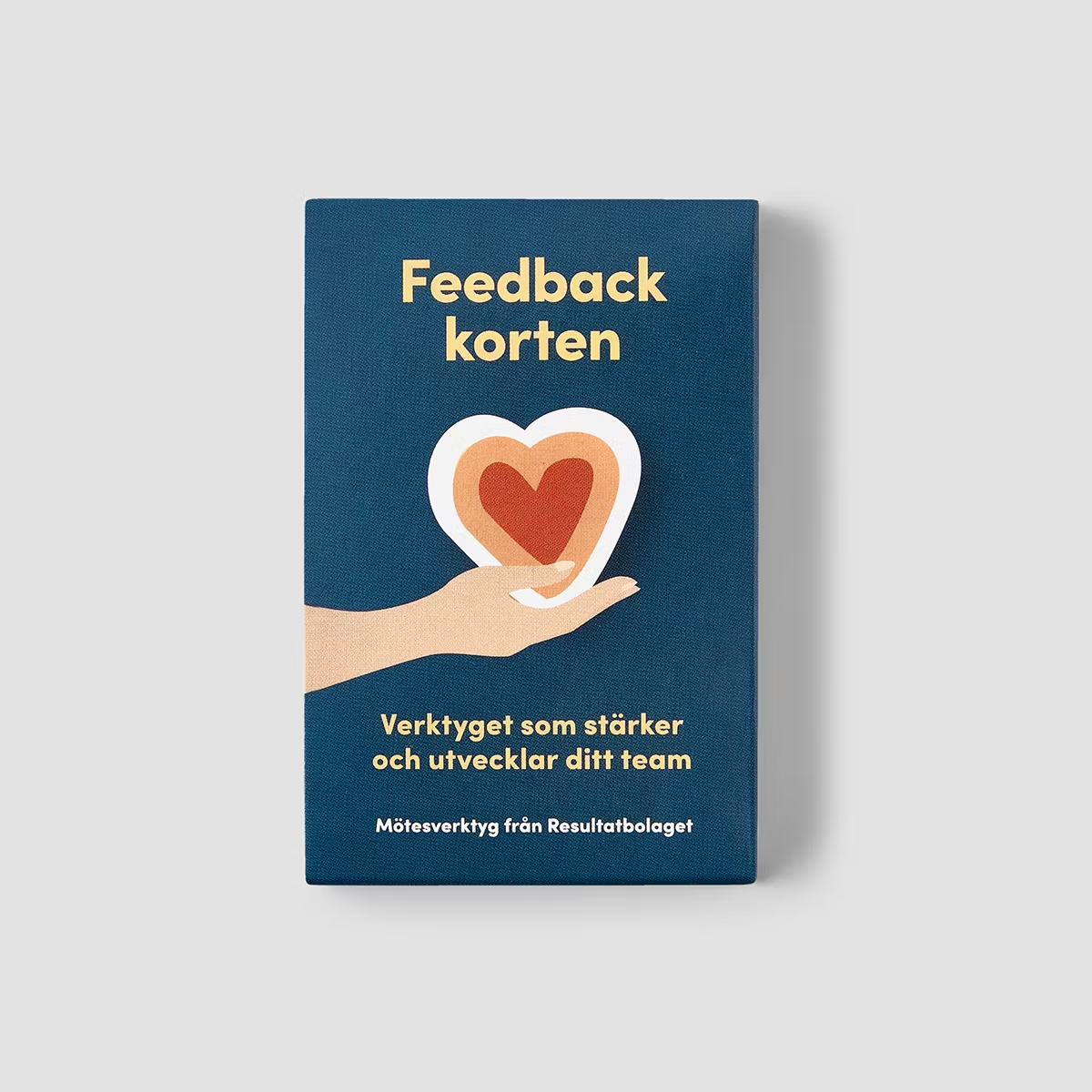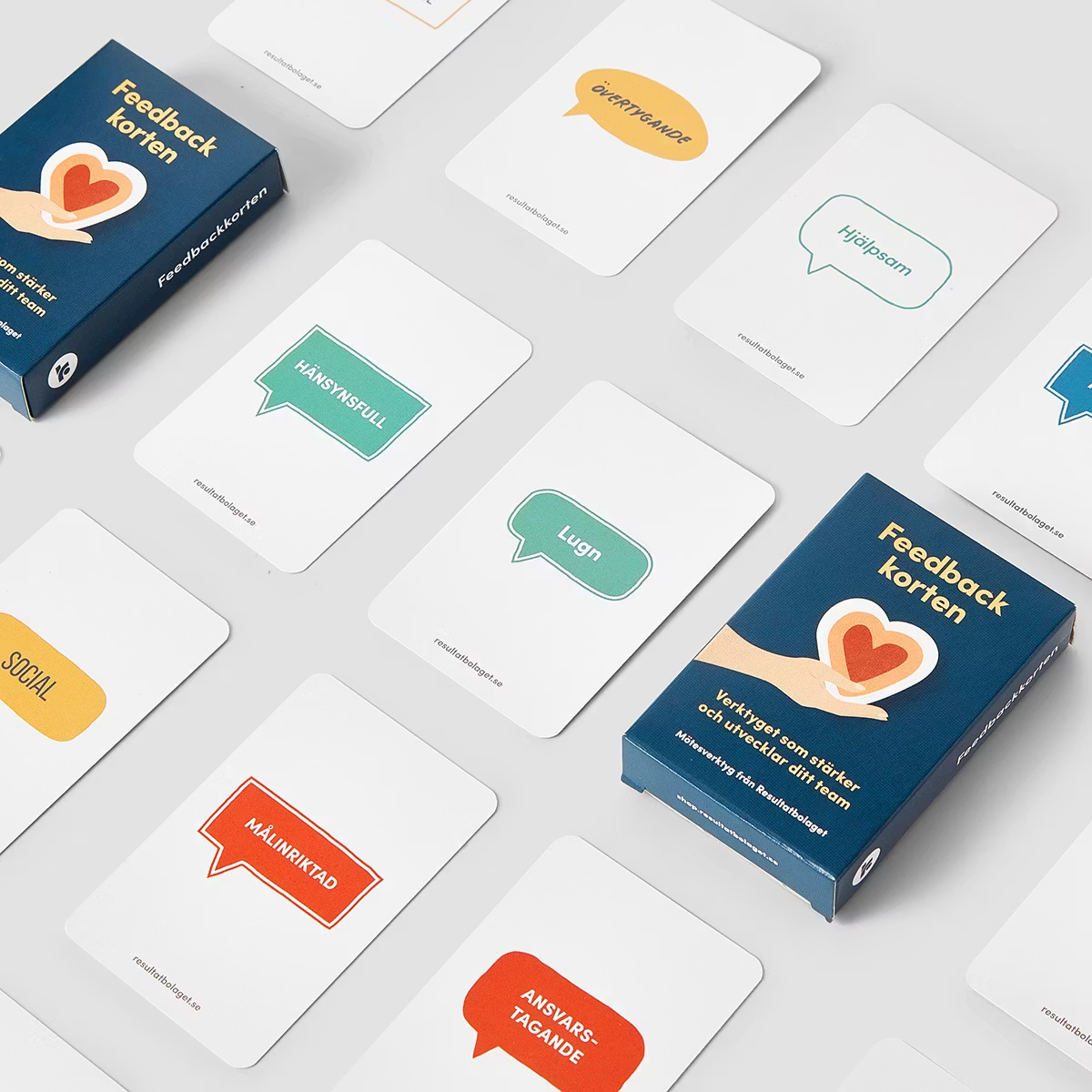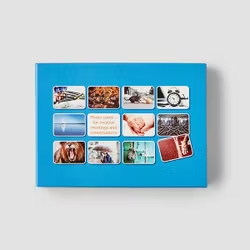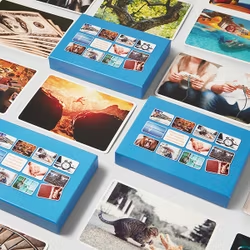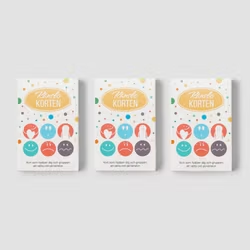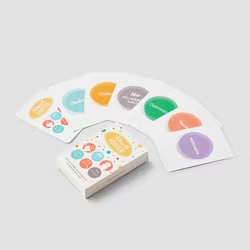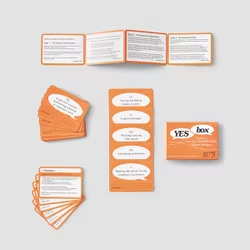The card game is the tool that helps a group to fantastic conversations, committed employees and safer teams. When we reinforce what we are good at, we thrive better. We develop and focus on a desired result. The box contains 52 cards that describe strengths and positive qualities. Use the cards to give appreciative feedback in the work team or to find your own strengths.
Below are three different ways to use the Feedback card game. If you want to learn more ways, you are welcome to our blog on Rapportbolaget's website www.resultatbolaget.se/blog
Have fun!
Appreciative feedback - fast version
Purpose: To provide appreciative feedback to each other. Suitable for both new groups and groups that have worked together for a long time.
Group size: 3 - 8 people
Time required: 30 minutes (based on 8 people)
Preparation: Lay out all the cards on a table with the face up. Ask the participants to stand around the table.
Implementation
Choose two cards each, one for the one on the left and one for the one on the right. Choose cards based on strengths that you think people have and that you appreciate.
Walk the team around and let everyone hand over the cards to the people, along with a motivation. Feel free to give a concrete example of a situation when the person has shown this strength.
Feel free to end with a round of reflection on how it felt to receive the appreciative feedback.
2. Surrounded by idiots? - No superstars!
You may have read or heard of the book entitled Surrounded by Idiots. We developed this game to lift each other up and make each other's strengths visible. To simply make each other stars.
Purpose: To provide appreciative feedback to each other. Suitable for both new groups and groups that have worked together for a long time.
Group size: 3 - 5 people (It is possible to be 7 people, if you are more than 5 two decks of cards are needed)
Time required: 90 - 120 minutes (based on 5 people)
Preparation: Lay out all the cards on a table with the face up. Ask the participants to stand around the table.
Part 1 - give and take cards
Implementation
Start by choosing two cards for yourself. Choose cards based on strengths that you think you have and that you are proud of.
Then select two cards for each in the group. Choose cards based on strengths that you think people have and that you appreciate.
Walk the team around and let everyone hand over the cards to the people, along with a motivation. Feel free to give a concrete example of a situation when the person has shown this strength. If person A starts giving his feedback to B, then it is B's turn to give to C. Everyone listens to everyone's feedback. When you have gone one lap, it is then A's turn to give to C, B's turn to give to D, and so on.
The last two rounds you take the cards you have chosen for yourself and motivate and give examples of situations when you have shown this strength.
Feel free to end with a round of reflection on how it felt to receive the appreciative feedback. If you want, you can compare cards you gave to yourself with those you received from others.
Part two - interpreting the cards
During the time you received and gave cards to each other in part one, you may have noticed that the cards have different colors, more specifically yellow, red, green and blue cards. It is not a coincidence but is based on different behavioral styles.
Now place the cards in front of you and look at the cards you received and what colors they have. Have you received cards from all four colors, is there a missing suit or do you have a suit that you have more cards in? Walk the team around and tell them what your color chart looks like.
You as a game leader can then read out the following:
Behavioral styles are sometimes symbolized by different colors, including in the behavioral analysis DiSC on which the book Surrounded by Idiots is based. NOTE. This game does not replace a test that is scientifically proven, but this is just a hint of how you have been perceived by the other people in your group. You often get cards from all colors but consider one or two colors. Below is a simplified description of how these behaviors are usually described.
Red people (if you have received many red cards) are often described as responsible, brave and result-focused. If you give a task to a red person, he or she will take it on target, on time and within budget. Reds are often fast, say what they think and want it to go fast. Full speed ahead is the slogan of the Reds!
Yellow people are visionary, they like to try new things, are creative and easy to get others on the way to the goal. They dislike too much routine and management. They want to be able to think freely, get to try their hand and think big. Always something new is the yellow slogan!
Green people take care of their personal relationships, make sure that everyone is included and that everyone has the information they need. They are good at seeing others and creating a warm atmosphere around them. No one is forgotten is the slogan of the greens!
Blue people are analytical, matter-of-fact and detail-focused. They are good at seeing what will happen in several steps forward if we do this or that. They want to be fully aware of the situation before giving answers. Getting to grips with all the details takes time, so the blue ones need it before they can decide or give advice. Nothing is forgotten is the slogan of the blues.
3. Feedforward
Purpose: To identify behaviors that we want to like in ourselves as well as behaviors that we want to get better at. Suitable for groups that know each other.
Group size: 2- 6 people
Time required: about 60 min (based on 6 people)
Preparations
Lay out all the cards on the table so that the properties are facing up and can be read.
Implementation
Start by choosing two cards with characteristics that you think are strengths in yourself. It's something you like about yourself and are proud of. Place these in a pile with the properties facing down.
Then choose two cards with characteristics that you want to develop in yourself. Place these in another pile with the properties facing down.
Start with your strengths. A person describes the strength that he sees in himself and gives examples of how this quality is expressed by giving examples of behaviors. Take one card per person and go around the team twice so that all cards run out.
Then tell about the cards in pile two (development areas). Describe why you want to develop this property. If you want, you can then ask the group for tips on how you could do to reinforce this trait through concrete examples of behaviors.
Example: You say that you want to be more relationship-oriented (your strengths are analytical and fact-oriented). The group then gives you tips that you can try to ask them more personal questions and become more open about themselves by telling them what you do in your free time. Remember to thank for the tips.
Go around the team twice so that everyone has told about their cards and received tips.
Finish through a new round where everyone gets to tell about a new thing they need to practice to develop their behavior.

 Svenska
Svenska
